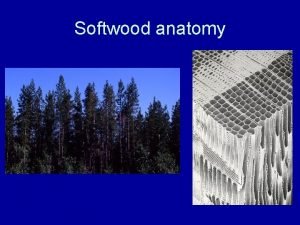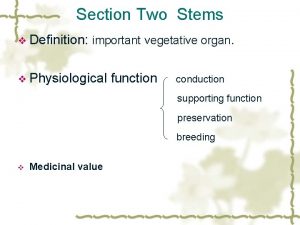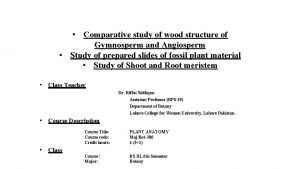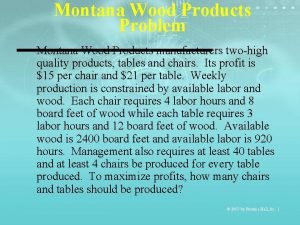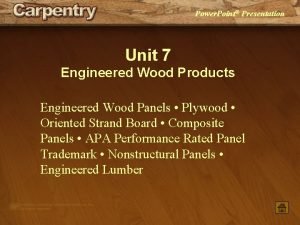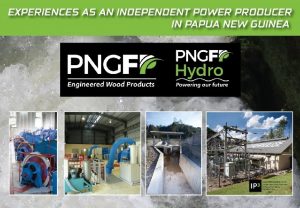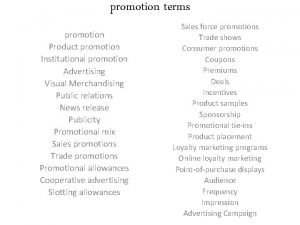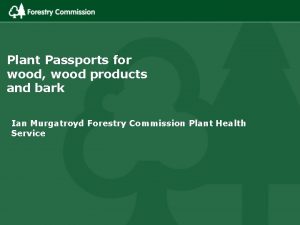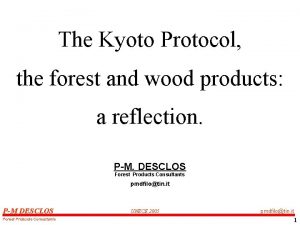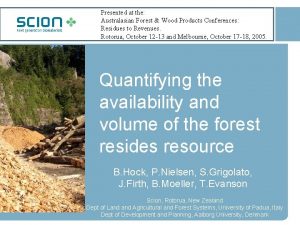Promotion of Wood and Forest Products in New























- Slides: 23

Promotion of Wood and Forest Products in New Zealand Shaun Killerby

Outline · New Zealand Market History · International Promotion · Domestic Promotion · Emergent Problems · New Initiatives

New Zealand Market History South Pacific islands with a total of 269, 000 km 2 of land

New Zealand Market History · About 50 60% of area covered in indigenous forest in 1840 · Rapid land clearance by colonists in late 19 th century · A domestic timber famine was subsequently projected

New Zealand Market History · National plantation forest estate established from 1919 · Fast growing Pinus radiata the primary species planted · Designed to complement the indigenous forest resource

New Zealand Market History Culture of wood use developed due to: Availability and low cost Earthquake prone country Education and promotion of the use of locally grown pine from the 1930 s

New Zealand Market History · By the 1960 s, plantation grown timber met most of domestic demand for sawn timber · A subsequent planting boom aimed at export diversification · The national forest industry was privatised from 1985

New Forest Planted Since 1919 Source: NZ Forest Owners Association

New Zealand Market History · Almost 25% of New Zealand is still in indigenous forest · Most of this area has been reserved since the 1940 s · Forest Accord signed in 1991 · Less than 2% of annual timber harvest is now indigenous

New Zealand Market History · Today there is 1. 8 million ha of commercial plantation forest · Over 89% of this area is planted in Pinus radiata · Annual harvest 18. 5 million m 3 · Most (70%) of this is exported

Projected Annual Harvest (million m 3) Source: Forest Research

International Promotion · Exports were only a minor concern before the 1970 s · Shift to export focus · Competitive environment since 1985, with international market development a major concern

International Promotion Marketing strengths include: Product versatility Product reliability Softwood equivalence Fast growing and renewable Environmental management Conservation role

International Promotion Weaknesses include: Three primary markets Lack international presence Perception of Pinus radiata Lack value added products Lack a market to production to product philosophy

International Promotion Market access a major issue: In market promotion Trade liberalisation Forest certification

Domestic Promotion · Culture of wooden, design built houses · Substitution and promotion have not been major issues · No significant demand for certified products

Domestic Promotion · Emphasis on technical promotion and tactics · Use of User Guides and Manuals for builders · Lack sophistication regarding understanding and meeting consumer aspirations

Emergent Problems · New housing types and styles · Proliferation of new products and systems · Concerns about variable wood quality over the past decade · Declining commitment to wood · Weather tightness issue

Weather-tightness Issue Convergence of: Changes to builder training New house types and styles New products and systems Changes to Building Code Inappropriate placement of untreated kiln dried timber Approval by inspectors

Weather-tightness Issue Result: Leaking buildings Rotting ceilings, walls, decks Public concern about the trustworthiness of wood Public concern about the trustworthiness of the timber and building industries

New Initiatives The emergent domestic problems highlight the danger of focussing on just production and supply Must deliver quality renewable and environmentally friendly products + an integrated customer focussed approach to design and delivery

New Initiatives · Collaborative research between forestry, the building industry and innovative manufacturers · Development of a joint customer and futures focus · Integrated research into higher value, differentiated products

Conclusion New Zealand has successfully established a national plantation forest estate which is widely perceived as versatile, renewable and environmentally friendly. But such perceptions can easily be jeopardised without a consumer focussed approach to production, design and delivery.
 Cross field pits
Cross field pits Aerial stem modification examples
Aerial stem modification examples Wood promotion
Wood promotion Angiosperm wood vs gymnosperm wood
Angiosperm wood vs gymnosperm wood Wood sawed wood old tongue twister
Wood sawed wood old tongue twister Wood wood teenager
Wood wood teenager Functional and innovative products supply chain
Functional and innovative products supply chain Montana wood products association
Montana wood products association Unit 7 engineered wood products
Unit 7 engineered wood products North america secondary wood products market
North america secondary wood products market Havco flooring
Havco flooring Wood products examples
Wood products examples Wood products examples
Wood products examples Png forest products
Png forest products Forest products
Forest products Pennsylvania forest products association
Pennsylvania forest products association Longwood forest products
Longwood forest products Introducing and naming new products and brand extensions
Introducing and naming new products and brand extensions Introducing and naming new products and brand extensions
Introducing and naming new products and brand extensions Coke vs pepsi products
Coke vs pepsi products Developing new products and services
Developing new products and services Promotion objectives
Promotion objectives Adding new unrelated products or services
Adding new unrelated products or services Processing used materials into new products
Processing used materials into new products
